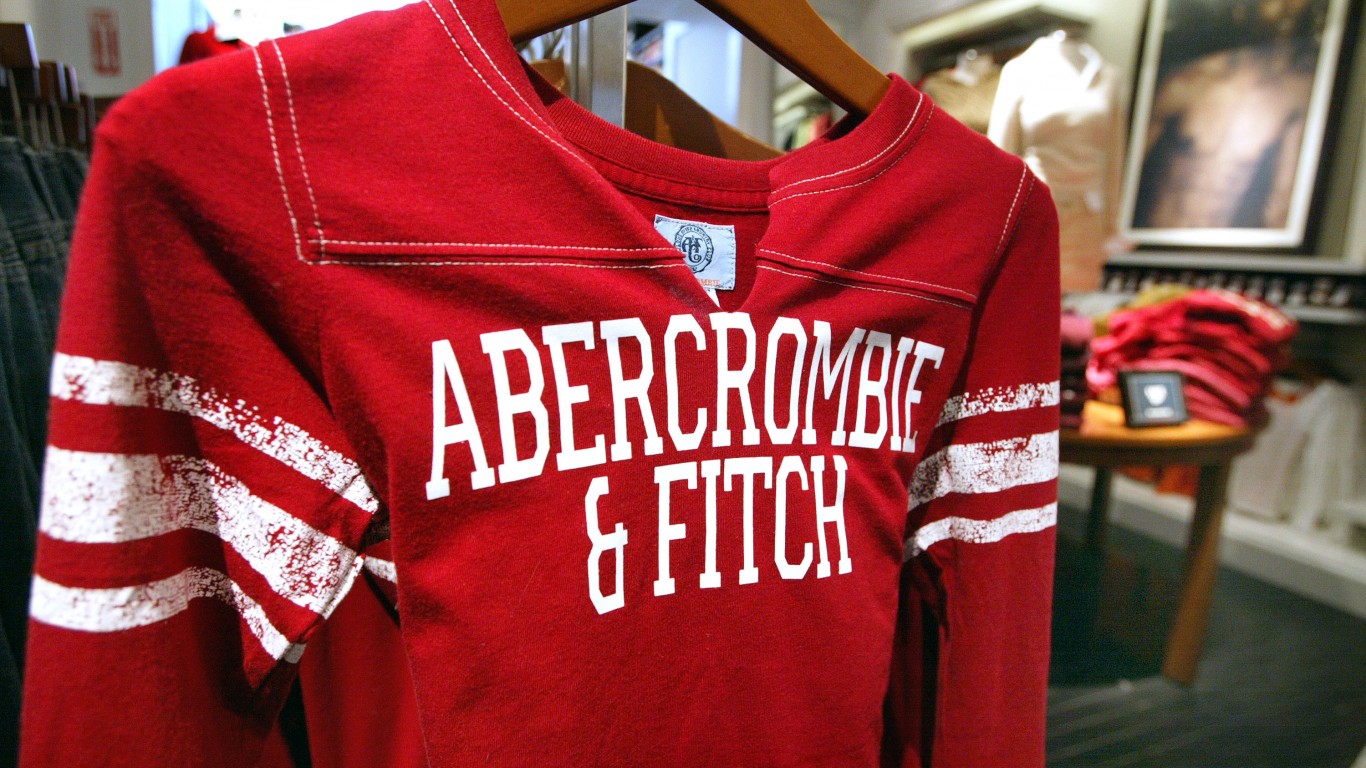
September is historically known as Wall Street’s worst performing month and this year is no exception. Month to date, the three major stock indexes — the Dow, the S&P 500 and the Nasdaq Composite — are down 2.2%, 4.2% and 5.9%, respectively. Moreover, last week, both the S&P 500 and the Nasdaq Composite posted their worst-perming week since March.
U.S. stocks markets have seen an impressive rally in the first seven months of this year, buoyed by the Fed’s decision to reduce the magnitude of interest rate hikes and positive statements by Fed Chairman Jerome Powell as the inflation rate declined steadily.
Market participants were mulling over the end of the ongoing rate hike cycle and the relaxation of restrictive monetary policies. However, this month’s post-FOMC meeting statement by Powell has dampened investors sentiments.
Concerns Regarding Fed’s Future Movements
In its September FOMC meeting, the Fed kept the benchmark lending rate unchanged at the existing 5.25-5.5%, as stated on Sep 20. However, the post-FOMC statement of Fed Chairman Jerome Powell dampened market participants’ sentiments.
Although the Fed paused its rate hike in the September FOMC meeting, the current dot-plot has shown a strong likelihood of one more hike of 25 basis points in 2023. That will take the terminal interest rate of this hiking cycle to 5.6%, well above the 5.1% forecast in June. Notably, the current range of the Fed fund rate is at the highest level since March 2001.
More importantly, the central bank said it would keep interest rates higher for a longer time period. The new projection has shown two maximum rate cuts in 2024 instead of four projected in June. The first cut in interest rate is not expected before September 2024.
Soaring Yields on Sovereign Bonds
Following the post-FOMC statement of Jerome Powell, the yield on the short-term 2-Year U.S. Treasury Note reached 5.441%, its highest level since 2006. This is closely linked to the possibility of a near-term economic downturn. The yield on the benchmark 10-Year U.S. Treasury Note touched 4.494%, its highest level since 2007.
A higher interest rate is detrimental to stock investing. It will push up the discount rate thereby reducing the net present value of investment from equities. Moreover, growth-oriented large-cap companies as well as the entire small and mid-cap space is heavily dependent on the chip source of credit. Therefore, a higher interest rate is likely to slow down U.S. economic growth.
Fears of a Government Shutdown
On Jun 21, Republican members of the House of Representatives sent the chamber into recess raising fears of a government shutdown. The House failed to agree on measures to set the rule for debate on a Pentagon funding bill. The bill was set for final voting on the floor of the House. Economists are concerned that a government shutdown will adversely impact the U.S. GDP growth rate in fourth-quarter 2023.
Our Top Picks
At this stage, investors should be prepared to minimize fluctuations in their portfolio and consequently rebalance it with suitable financial assets to maintain stability. It would be prudent to pick value stocks with a favorable Zacks Rank to cushion the portfolio as well as make some gains from the upside potential. These stocks could prove to be valuable once the rally resumes.
We have narrowed our search to five value stocks. Each of our picks carries a Zacks Rank #1 (Strong Buy) and a Value Score of A or B.
Guess? Inc. GES has been benefitting from its businesses across Europe and Asia, along with its focus on six strategic initiatives. The core strategies of GES include organization and culture, functional capacities, brand relevance with three main consumer groups (heritage, Millennials and Generation Z customers), customer focus, product brilliance, and an international footprint. Also, GES is progressing with its customer-centric initiatives, including omnichannel capabilities and advanced data analytics.
The forward P/E of Guess? for the current financial year is 7.25X, lower than the industry average of 11.83X. It has a PEG ratio of 0.95, lower than the industry average of 1.21. The Zacks Consensus Estimate for current-year earnings has improved 5.2% over the last 30 days.
Urban Outfitters Inc.’s URBN strategic growth initiative, FP Movement, and store-related efforts bode well. The FP Movement appears encouraging, for URBN generating above 57% comps growth during the second quarter of fiscal 2024.
Brandwise, net sales of URBN were up 10.6% for the Anthropologie Group and 22% for Free People. Also, the Retail segment’s comparable net sales grew 4.9% backed by a mid-single-digit increase in retail-store sales and digital channel sales.
The forward P/E of Urban Outfitters for the current financial year is 10.92X, lower than the industry average of 12.82X. It has a PEG ratio of 0.46, lower than the industry average of 1.18. The Zacks Consensus Estimate for current-year earnings has improved 1.6% over the last 30 days.
Abercrombie & Fitch Co. ANF has benefitted from the continued momentum in the Abercrombie brand and a sequential improvement in the Hollister brand. Lower freight costs and robust AUR growth aided margins. Consequently, ANF expects year-over-year sales growth of 10% for fiscal 2023. Store optimization and the Always Forward plan bode well.
The forward P/E of Abercrombie & Fitch for the current financial year is 12.63X, lower than the industry average of 12.82X. It has a PEG ratio of 0.04, lower than the industry average of 1.18. The Zacks Consensus Estimate for current-year earnings has improved 75.8% over the last 30 days.
Dell Technologies Inc. DELL designs, develops, manufactures, markets, sells, and supports various comprehensive and integrated solutions, products, and services in the Americas, Europe, the Middle East, Asia, and internationally. DELL operates through two segments — Infrastructure Solutions Group and Client Solutions Group.
The forward P/E of Dell Technologies for the current financial year is 11.13X, lower than the industry average of 26.03X. It has a P/S ratio of 0.54, lower than the industry average of 1.94. The Zacks Consensus Estimate for current-year earnings has improved 13.3% over the last 30 days.
Owens Corning OC is benefiting from the solid performance of the Roofing segment driven by higher volumes related to storm activity and positive price realization. OC’s favorable product and customer mix along with strategic buyouts are added benefits. OC’s focus on new product and process innovation bodes well. Year to date, it has unveiled 17 new refreshed products across core platforms in Roofing, Insulation and Composite businesses.
The forward P/E of Owens Corning for the current financial year is 10.07X, lower than the industry average of 14.76X. It has a P/S ratio of 1.25, lower than the industry average of 1.36. The Zacks Consensus Estimate for current-year earnings has improved 0.1% over the last 30 days.
Abercrombie & Fitch Company (ANF): Free Stock Analysis Report
Dell Technologies Inc. (DELL): Free Stock Analysis Report
Urban Outfitters, Inc. (URBN): Free Stock Analysis Report
Guess?, Inc. (GES): Free Stock Analysis Report
Owens Corning Inc (OC): Free Stock Analysis Report
To read this article on Zacks.com click here.
This article originally appeared on Zacks
Cash Back Credit Cards Have Never Been This Good
Credit card companies are at war, handing out free rewards and benefits to win the best customers. A good cash back card can be worth thousands of dollars a year in free money, not to mention other perks like travel, insurance, and access to fancy lounges. See our top picks for the best credit cards today. You won’t want to miss some of these offers.
Flywheel Publishing has partnered with CardRatings for our coverage of credit card products. Flywheel Publishing and CardRatings may receive a commission from card issuers.
Thank you for reading! Have some feedback for us?
Contact the 24/7 Wall St. editorial team.



